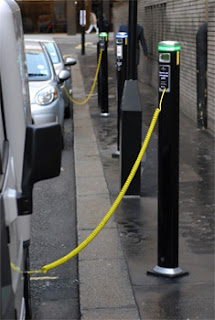The Ministry of Land, Infrastructure, Transport and Tourism in Japan is currently reviewing vehicle categories for micro-sized mobility products, while in Europe, the L-7 motorcycle category caters for Electric Vehicles with an output of less than 15kW and weighing less than 400kg excluding the weight of the battery - called quadricycles. The G-Wiz and the Renault Twizy are examples of this category of car.
Honda will begin demonstration testing in Japan in 2013 to verify its potential for everyday short-distance transportation for families with small children and for senior citizens, home delivery services, commuting and car sharing. The G-Wiz already did this in London a few years ago i.e. it demonstrated an appetite for low cost, low speed commuter vehicles for congested city streets.
The prototype's cabin is designed to seat one driver and two children in the 2.5m long body. Changing the rear seat can switch the layout to accommodate one driver and one adult passenger.
Other features include the use of a tablet device for functions such as meter display, navigation, audio and back-up camera display, and the ability to charge the battery of the tablet using roof-mounted solar cells. In addition, Honda is continuing research of onboard solar cells to provide solar energy to assist the driving (hmm, not sure...).
Honda's Micro Commuter Prototype has a range of approximately 60 km / 38 miles from a full 3-hour charge. It can reach a maximum speed of 80 km/h / 50 mph.
I like it.



